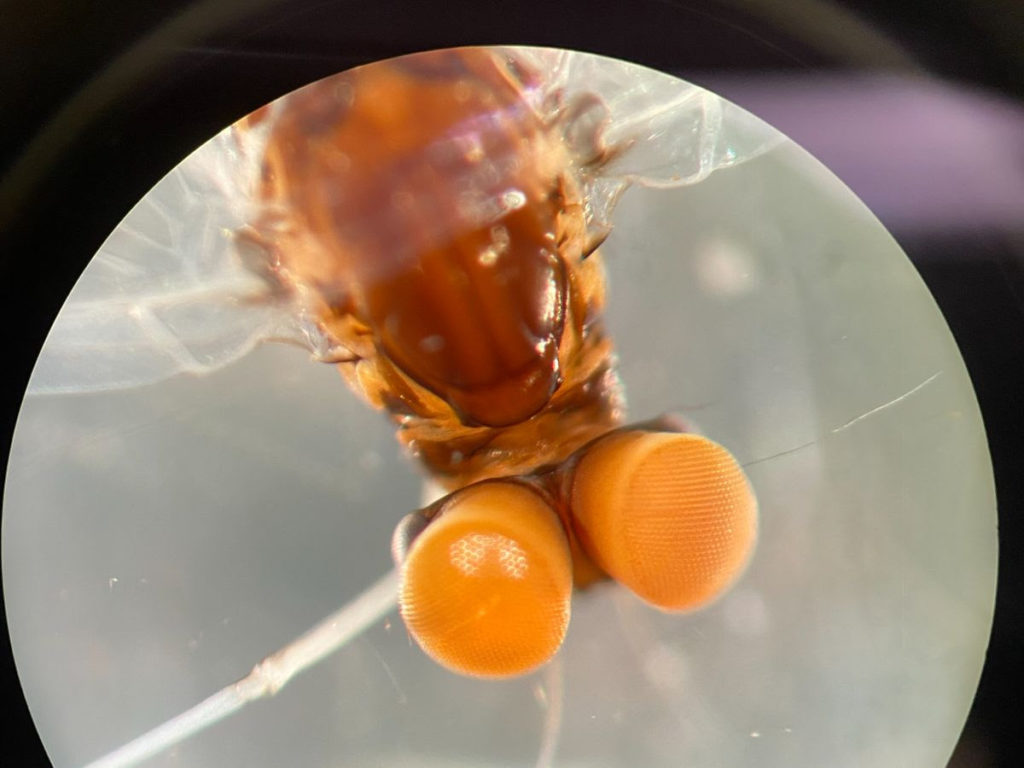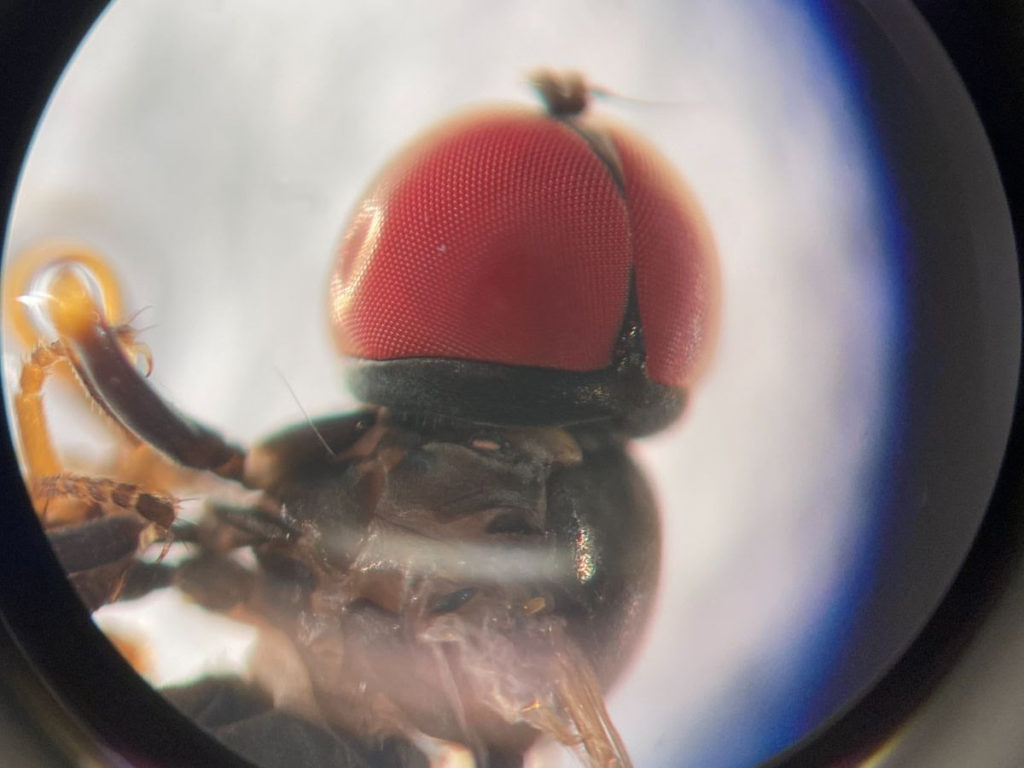Welcome back to the Lab!
Field season has come to close and if you’ve been with us since last year, you probably remember our insect abundance survey efforts.
Just like last year, all the insects have to be sorted to order, and then individually counted. Eventually, all the insects will be weighed to get a sense of the overall insect biomass at our trap sites. Since the process hasn’t changed since last year, I thought I’d show off some of the interesting finds from this year’s collection.
Caddisfly Hatch at Rock Creek

Sorting insects is tricky enough, but during one sampling session at Rock Creek, we were caught in a caddisfly hatch. Caddisflies, (in the small dish at the top of the photo) are closely related to moths and butterflies, and have scaled, fuzzy wings like their close cousins. Even after all the minute caddisflies were sorted from this sample, an infinite number of tiny wing hairs were left behind, floating in the ethanol.
Jeepers Creepers

Where’d you get those eyes? Male mayflies have a set of “turbinate” eyes in addition to two compound eyes and three ocelli (simple eyes). It is thought that these bizarre, cylindrical stalks help the male mayfly during a mating swarm. The male is able to fly below a swarm of mayflies and locate a female (who lacks these impressive peepers) from below; he will then approach her, and the two will mate in midair.
My, What Big Jaws You Have

Damselflies and dragonflies are impressive aerial predators. Even as aquatic nymphs, they can hyperextend their “jaw” and snatch any unwitting prey that swims by. As adults, their jaws are fixed, but their lightning-fast aerial maneuvers more than make up for their lack of mandible mobility.
Never Skip Leg Day

Look at the femoral yams on this wasp. This is likely a female parasitoid; it is thought that she will use those impressive “thighs” to physically manipulate her host organism while she lays her eggs… inside of it.
Hungry Eyes

These are likely the eyes of a fly belonging to the family Hybotidae, or the dance flies; so named because of the intricate patterns created by the predatory flies in this family. They will run up, down, and around the bark of trees in search of their prey, giving the impression that they are dancing for their dinner.
Until next time, thanks for visiting the lab!
Bug Wrangler Brenna
brenna@missoulabutterflyhouse.org
Want to revisit a previous Notes from the Lab issue? Check out our archive! Do you want to request a subject for an upcoming issue? Email me at the address above and put “Notes from the Lab” in the subject line.